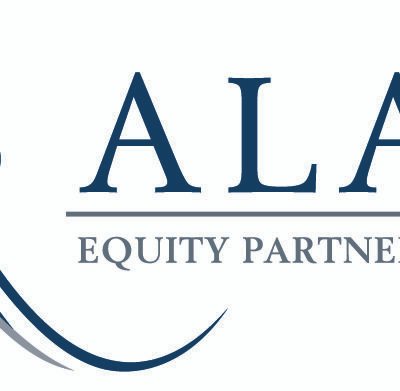I’ve talked to several CFOs recently about AI, and a prevailing theme has emerged from our conversations. We all know there is great interest in the promise of AI. Now it’s time to put that promise into action, and finance leaders are searching for the best AI use cases to deliver near- and long-term value.
Leveraging AI In finance—move from theory to practice
Last year, I encouraged CFOs to get curious about generative AI (GenAI) technologies. It is now time to shift that focus to higher-impact and practical GenAI (and other AI) use cases while rethinking widely held GenAI assumptions related to governance, tools and talent. And CFOs are starting to act.
My firm’s latest global survey of CFOs and finance leaders shows that the two most prevalent uses of GenAI by finance groups involve 1) compliance and regulatory reporting, and 2) risk assessment and risk management. Our experience also shows that two other uses of GenAI—throughout the order-to-cash cycle and in expense management initiatives—are delivering lucrative returns over the long term.
Compliance and risk management use cases
There is a reason why GenAI is gaining some traction in compliance and risk management. Simply stated, the benefits of deploying AI tools to strengthen these activities are proving to be well worth the investment.
For example, finance groups are currently deploying GenAI tools to complete standard compliance forms and bolster fraud detection and protection. AI’s ability to scrutinize vast data sets and then identify anomalies and predict trends gives finance groups, compliance teams, and data privacy and security groups an opportunity to get a jump on fraudulent activity. Predictive detection helps retailers reduce shrinkage and bolster loss prevention efforts. Insurers leverage AI to respond quickly to suspicious variations in claim patterns. CISOs can spot privacy breaches as they occur, and companies in cyclical industries use AI to detect and address peculiar purchasing patterns.
The value of these applications resides in the speed and precision of anomaly detection. For example, from a risk management and resilience perspective, consider the advantages of being able to respond to a data privacy lapse within hours as opposed to a month or two after the breach occurs and the damage has spread.
Two practical finance use cases to prioritize
In addition to compliance and risk management, AI’s predictive capabilities can pinpoint valuable opportunities to grow revenue, enhance the customer experience (and customer value), improve profitability via cost optimization and enhance communications with the board and analysts. Here are just some of the activities we’re seeing in the market that are driving improved performance and value.
1. Budgeting, forecasting and cash flow management
AI can improve a range of forecasting activities throughout the order-to-cash cycle to deliver major cash flow management improvements. Feeding preliminary sales data into an AI application enables it to analyze patterns to produce long-term revenue projections that finance and sales teams can use to adjust revenue assurance activities. On the demand side, finance groups and operations partners can leverage AI to alert trading partners about current and (likely future) fluctuations in sales volumes, enabling suppliers to adjust their production and ordering proactively. AI-driven sensitivity analyses can help finance assess interest rate changes, supply chain obstructions and other external wildcards that affect profitability, including the cost of goods sold.
In addition to those revenue and cost-predictive AI driven and developed data points, some of the more impressive uses of AI equip finance groups with a deeper understanding of customer behaviors—insights that help drive order-to-cash transformation and improve cash flow. By leveraging AI to understand payment behaviors (e.g., when and how customers pay), finance and accounting teams can adjust customer onboarding processes, collection efforts and other accounts receivable activities to increase cash flow. Such AI-driven analyses also shed new light on customer value (i.e., who qualifies as a truly valuable customer), which can lead to more profitable customer segmentation and retention activities. And companies can adjust their own payment timing accordingly to align inbound and outbound cash flows.
2. Expense management and cost optimization
When organizations leverage AI to scrutinize expenses, they have the opportunity to enhance third-party spending, sourcing management, IT rationalization and other targets of cost optimization. Do you want to reduce operating costs by 10%? AI-driven tools can run profitability analyses that diagnose which areas are best suited for cost reductions, such as those goods the enterprise is procuring six different ways at 10 different price points. The AI solution could even assist finance in presenting the data using appropriate visualization techniques.
Everyone agrees that data-informed decisions are often the best decisions and that insightful data can enable anticipatory behavior. What’s key with AI models is that they can advance the analytics that can be used to facilitate decisions and preparedness. The limitless possibilities encourage experimentation by empowered individuals. For example, McKinsey suggests uploading publicly available earnings call transcripts from competitors and prompting the AI tool to list the five most-frequently-asked questions and to suggest responses. The company’s and its competitors’ financials could also be uploaded and the GenAI solution could be prompted to apply the perspective of an activist investor to address questions regarding aspects of the company’s performance that would catch an activist’s attention.
Try out ideas like these and the value of GenAI becomes clearer.
Other aspects of AI to reconsider
As CFOs evaluate where they can apply AI next to derive measurable and meaningful value, they should also take a fresh look at:
- Tools: In today’s well-funded AI and GenAI marketplace, seemingly countless vendors are selling new and enhanced tools and capabilities. But finance leaders should first consider their existing systems and applications. ERP vendors have added ample AI functionalities to their solutions over the past 18 months, as have sellers of stand-alone applications that exist within ERP ecosystems.
- Governance: Many, if not most, organizations are still struggling to establish clear governance and guidelines for using AI. Defining appropriate governance for an AI solution is critical. Steps should include creating an AI advisory board; identifying potential use cases, the expected value delivered and potential risks; aligning the organization’s existing governance framework, policies, standards and controls to the selected use cases; ensuring that the company’s IP is protected; and educating users.
- Return on investment: Addressing and monitoring the ROI on GenAI and AI use cases requires a nuanced approach. The short-term returns on these pilots may be negligible, yet longer-term payoffs can be substantial. While finance should certainly not “do AI for AI’s sake,” business cases should look beyond short-term gains to address how these investments support longer-term plans, objectives and performance. Other organizations have deployed AI and rushed to declare victory. A more prudent approach is to monitor the extent to which these efforts achieve defined business outcomes.
Finally, talent also requires a fresh perspective. Conventional wisdom holds that organizations have to invest in data scientists and GenAI experts in order to get into the AI game. That’s often not the case when it comes to finance-driven AI initiatives. Your organization may have more AI expertise than you realize. By having the ability to adapt finance roles to add AI usage and upskill or reskill team members, you can generate positive morale and retention impacts for the finance team’s personnel complement. And most of the use cases I’ve discussed here can be performed using the AI functionality in existing ERP systems, procurement platforms and accounting applications. As long as finance groups have access to cost optimization, risk management, forecasting and budgeting expertise, they can implement practical AI use cases and make noteworthy progress right now on their respective AI journeys.





